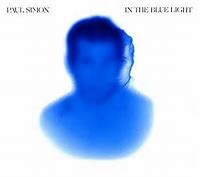Liverpool Sound and Vision Rating 8.5/10
The microphone is often primed for the sound of a hero standing by to record their own particular version of history, waiting for the neon light to blaze with the motto of the scared text, recording in process. Recording after many takes is to be expected, producer’s, engineers, the band, the public, all deserve the very best that can be attained, the beauty of the moment and the illusion of the first-take wonder, all comes with the definition of what is recorded, what is set down, and what makes the listener believe long after those songs may have faded from memory.
The neon glow, that long sought after advice from another life time in which people prayed to and saluted as if it was a God, a heavenly signal which was man-made, a luminous, almost frivolous beast, often can still be a beautiful sight, and one that any artist with an extensive back catalogue may look upon as a friend, an ally, as they seek to redress the balance of old songs that they might have enquired as to say, this song, in the modern way and with hindsight of the lyrical meaning, could be even better.
It is In The Blue Light of retrospective that Paul Simon has looked upon some old favourites with an eye that has come to realise just how much he has given to the world, and yet could still once again be taken down, dusted off, polished with love and respect and given a new lease of life, perhaps a more detailed purpose. In The Blue Light, in the shade of the supposed melancholy one might feel when looking back at mountains conquered and huge depths traversed, a sense of positivity comes unexpectedly riding a noble steed, its name is change, not one to be ignored, not one to be afraid of, instead embraced, loved and fortunate to live through.
Paul Simon has always been keen to explore new feelings within his work, always willing to take a step that some might sneer at and in the set of songs that have had the willingness of Time to hold the idea of brave reworking attached to them, they shine like the once national guitar, they hammer home the appreciation of time tamed, honoured and in songs such as One Man’s Ceiling Is Another Man’s Floor, Pigs, Sheep and Wolves, How The Heart Approaches What It Yearns, Rene And Georgette Magritte With Their Dog After The War and Darling Lorraine, what Paul Simon has produced is astonishing, beautifully haunting, melancholic certainly, but performed by one who sees Time has still got the ability to change, Time is not always the master of what has gone before; sometimes the artist can transform the past and make it shine brighter than ever.
A reworking of songs that might just be considered contemporary and recent in some quarters but still with that sensational Simon appeal sewn throughout.
Ian D. Hall
